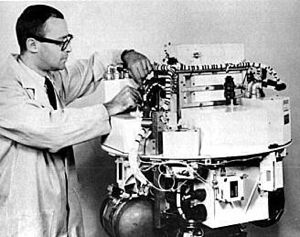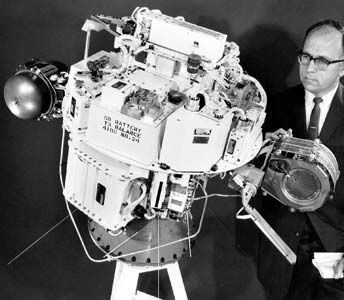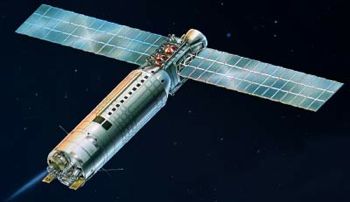
Home - Search - Browse - Alphabetic Index: 0- 1- 2- 3- 4- 5- 6- 7- 8- 9
A- B- C- D- E- F- G- H- I- J- K- L- M- N- O- P- Q- R- S- T- U- V- W- X- Y- Z
SERT
 SERT Credit: NASA |
AKA: Space Electric Rocket Test. Status: Operational 1970. First Launch: 1970-02-04. Last Launch: 1970-02-04. Number: 1 . Gross mass: 1,404 kg (3,095 lb).
More at: SERT.
| SERT 1 Technology satellite for NASA's Lewis Research Center, USA. |
Family: Ion engine technology satellite, Sun synchronous orbit, Technology. Country: USA. Engines: Bell 8096. Launch Vehicles: Thor, Delta, Thorad SLV-2G Agena D. Launch Sites: Vandenberg, Vandenberg SLC2E. Agency: NASA. Bibliography: 2, 4076, 4077, 4078, 4079, 4080, 4081, 6, 6864, 13082.
 | SERT 1 Credit: Manufacturer Image |
 | SERT 2 Credit: Manufacturer Image |
1970 February 4 - . 02:59 GMT - . Launch Site: Vandenberg. Launch Complex: Vandenberg SLC2E. LV Family: Thor. Launch Vehicle: Thorad SLV-2G Agena D.
- SERT 2 - .
Mass: 1,404 kg (3,095 lb). Nation: USA.
Agency: NASA Cleveland.
Class: Technology.
Type: Ion engine technology satellite. Spacecraft: SERT.
USAF Sat Cat: 4327 . COSPAR: 1970-009A. Apogee: 1,046 km (649 mi). Perigee: 1,039 km (645 mi). Inclination: 99.20 deg. Period: 106.00 min.
Space Electric Rocket Test; the ion engines aboard were operated until 1981. The SERT 2 development program started in 1966 and included thruster ground tests of 6742 hours and 5169 hours duration. A prototype version of the SERT 2 spacecraft was ground-tested for a period of 2400 hours with an operating ion engine. In addition to diagnostic equipment and related ion engine hardware, the spacecraft had two identical 15 cm diameter, mercury ion engines. Flight objectives included in-space operation for a period of 6 months, measurement of thrust, and demonstration of electromagnetic compatibility. The thruster maximum power level was 0.85 kW, and this provided operation at a 28 mN thrust level at 4200 s specific impulse. Flight data were obtained from 1970 to 1981 with an ion engine operating intermittently in one of three different modes, namely, HV ion extraction, discharge chamber operation only, or just neutralizer operation. Major results were that two mercury engines thrusted for periods of 3781 hours and 2011 hours. Test duration was limited due to shorts in the ion optical system. Thrust measured in space and on the ground agreed within the measurement uncertainties. Up to 300 thruster restarts were demonstrated. One power-processing unit accumulated nearly 17,900 hours during the course of the mission. Additionally, the ion propulsion system was electromagnetically compatible with all other spacecraft systems.
Back to top of page
Home - Search - Browse - Alphabetic Index: 0- 1- 2- 3- 4- 5- 6- 7- 8- 9
A- B- C- D- E- F- G- H- I- J- K- L- M- N- O- P- Q- R- S- T- U- V- W- X- Y- Z
© 1997-2019 Mark Wade - Contact
© / Conditions for Use